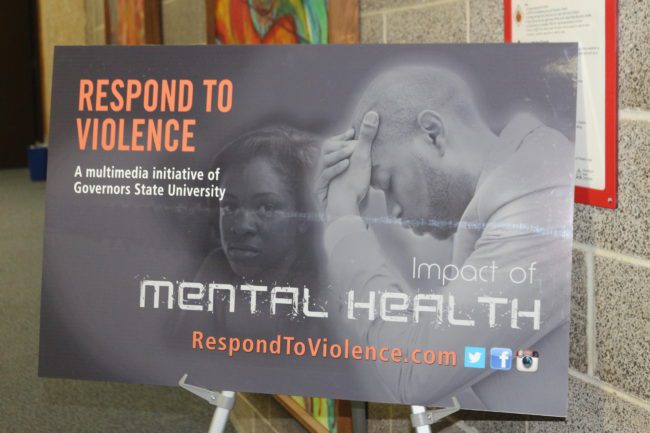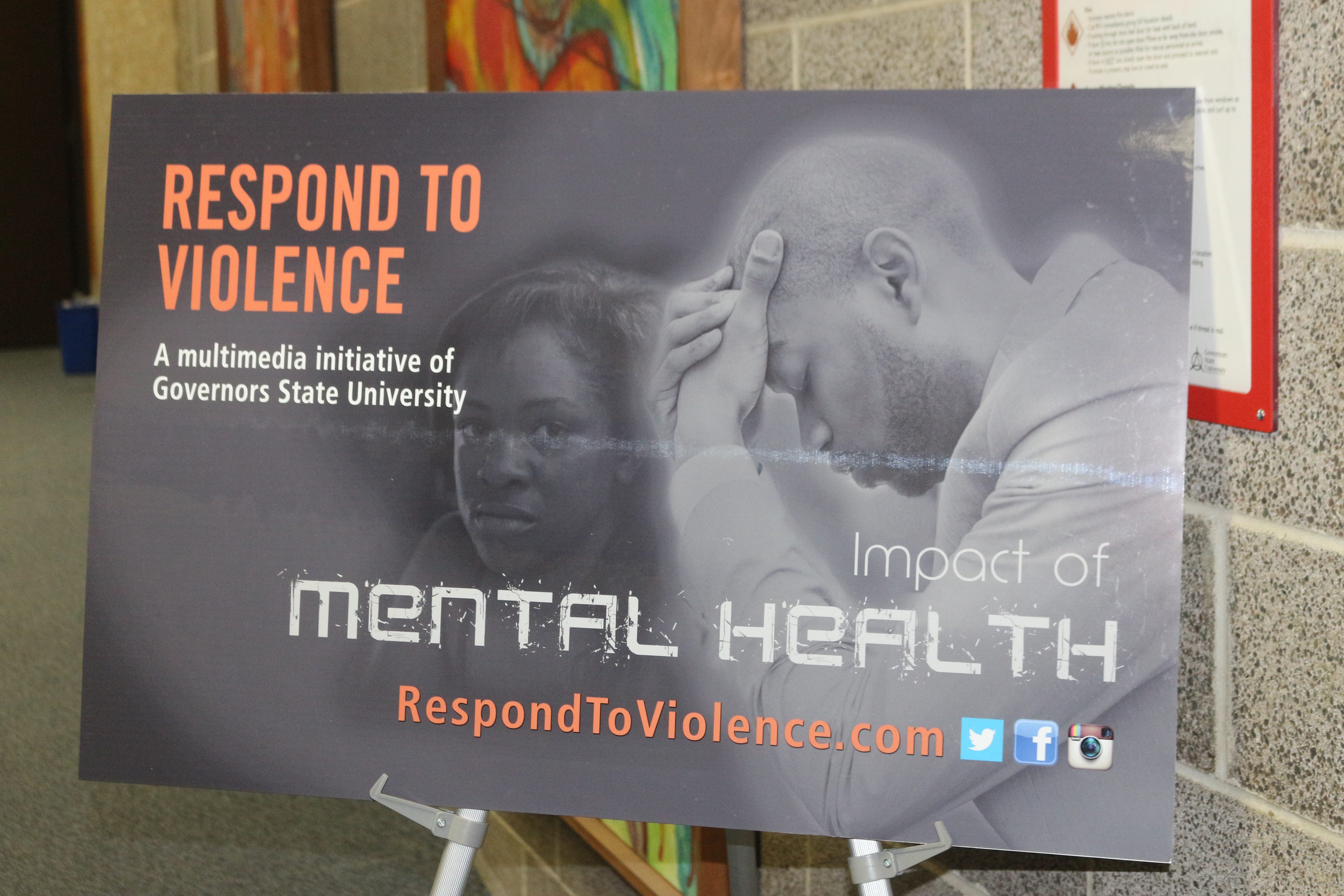
On Nov. 1, 2017, Governors State University hosted, “Respond To Violence, Impact of Mental Health.” This multifaceted event covered the many issues regarding violence and the impact it has within the Chicago city limits and beyond. The Respond to Violence campaign is two fold, as it serves as a resource via the web but also initiates programs within the community. This campaign was created by professor of media studies at Governors State, Yevette L. Brown, as a “multimedia and web-based and video initiative of Governors State University, designed to bring together the students, faculty, and community to discuss issues around violence and violence prevention.”
According to NBC 5 News, Brown found her passion for creating solutions to violence when violence directly affected her family. She spoke of the incident. Her son Kyle was hit in the arm by a stray bullet on his way home from the grocery store. She explained how shaken she, her son, and the rest of their family was after this incident.
Because she wants to take part by being the change she wants to see in her community, her goal is to provide a platform for youth to voice their opinions and speak on the many issues of violence that affect each and every one of them directly and indirectly on a daily basis. Brown wants to encourage dialogue and come up with methods of prevention and solutions as a community.
One of her events that allowed her to accomplish this goal was the “Respond to Violence, Reaching Our Youth” program that was hosted in November 2014.
Jumping ahead to November 2017, and the Impact of Mental Health event held at Governors State University, the conversation between Thomas Dart, Cook County sheriff; Nneka Jones Tapia, executive director of Cook County Jail; and Brandis Friedman, correspondent and content producer for “Chicago Tonight” clarified many of the issues surrounding mental health and often, but not always, it is a transition to violence.
Tapia explained the grey area surrounding mental health and how it impacts the communities in stating,
Untreated mental health leads to violence, not mental illness leading to violence period.
This is why Tapia and Dart find it imperative to have officers properly trained in the streets to prevent situations from escalating and the only solution being jail time. One training that all officers are required to have, as explained by Friedman, is CIT.
CIT is Crisis Intervention Training and it assists individuals that are homeless.
Having this training decreases the violence between the homeless and officers and also decreases the charges made toward the homeless. Some situations that occur when there is a lack of proper training surrounding homelessness occur in a ripple effect. There is a lack of treatment, the homeless are approached by the police, they start pushing and resisting arrest, and are added into the system.
Despite the fact that the largest mental health program is in a jail or a prison, Sheriff Dart is working diligently to decrease the intake of inmates who have minor offenses and provide other solutions such as treatment centers or hospitals as opposed to jail time.
Those who choose to self medicate for reasons such as lack of resources can spend up to 300 days in jail until trial for minor drug offenses.
Because of the discontinuing of many mental health institutions and programs in the Chicagoland area, in order to help the state save money, there has been a major increase in the amount of minor drug offenses citizens are charged with for self medicating and thus leads them to long periods of jail time.
They are not taking into consideration the data that reveals whether or not these programs are to be named useful. “Instead they throw them in a 4×8 concrete cell with someone else who has a mental illness.”
Dart thinks about it this way, “If I had a loved one in here what would I want for them? I would want them to be treated as patients.”
Both Dart and Tapia have similar beliefs when it comes to mental health and mental illnesses as they feel that if individuals are not a danger to society, they should be medicated and treated for their illness through hospital facilities instead of jail cells.
Lack of treatment results in reoccurring admission into the system even though there is no benefit to the criminal justice system and the state financially.
It cost on average $168 per day to house someone in the jail.” However, people in the criminal justice system never studied incarcerated peoples at all, they’re only focused on holding the individuals.
There are 8.9 million mentally ill inmates with substance abuse issues, 44% receive substance abuse treatments.
They key to rehabilitating the mentally ill is to figure out ways to help get them back into the real world if they do get placed into the system. Providing programs that encourage them to be their best selves provides the most benefit.
Cook County Jail, in particular, uses the old boot camp grounds for the mentally ill inmates as an alternative to the traditional correctional setting. “Here they are decriminalized, stabilized and treated humanely.”
As a result, “80% of inmates go straight from jail back into the community.”
However, inmates are not released and left high and dry. As they transition into becoming citizens again, the jail continues to support them completely by taking them to their loved ones after being discharged. Alumni programs allow previous inmates to voluntarily come to jail to receive treatment. They also attend one of the few open treatment centers on Chicago’s West Side.
Written by Alexandria Martin
Edited by Jeanette Smith
Sources:
Respond To Violence: A Multimedia Initiative of Governors State University
Making a Difference: Responding to Violence Campaign
Featured and Top Image by Staff Photographer Devin Jackson



